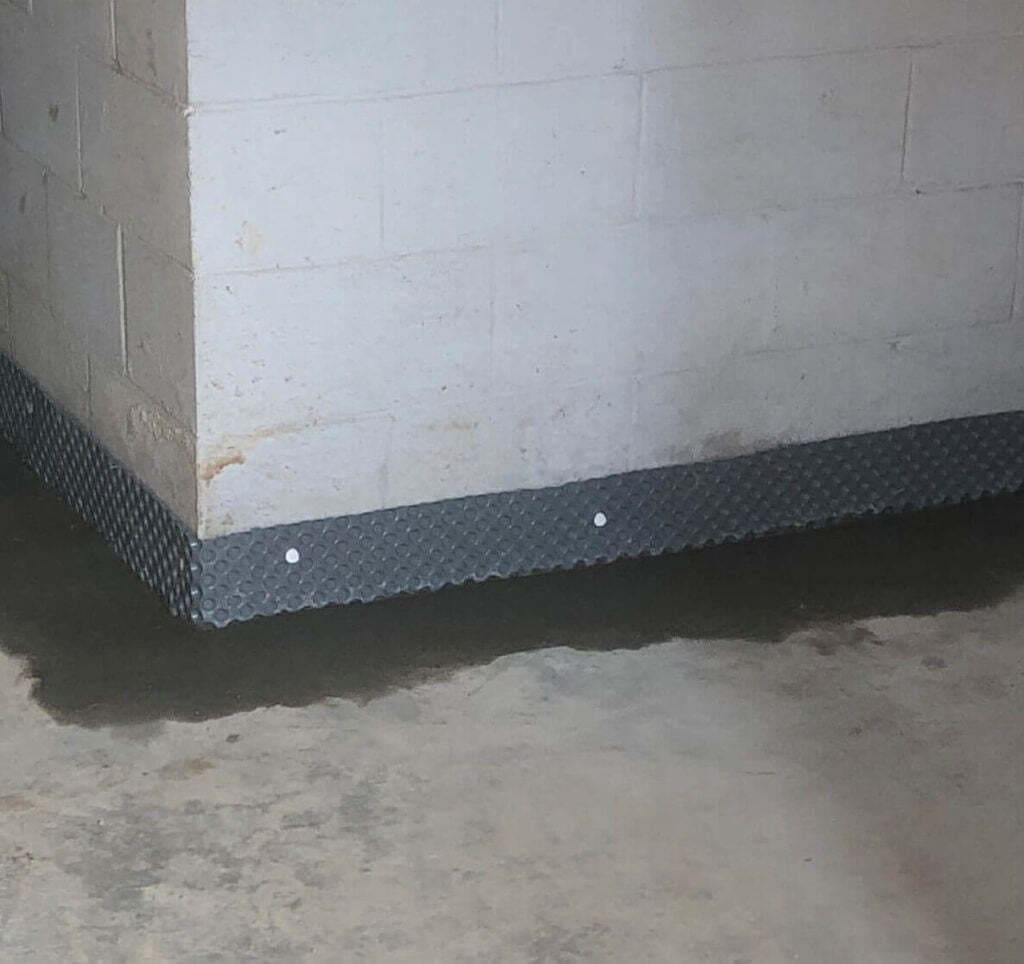
When you hear “basement drain tile,” what do you picture in your mind? Until I started working at Acculevel, this term made me picture a classic blue and white mosaic tile. This is 100% dead wrong, of course, because basement drain tile is actually a form of waterproofing.

This is the author’s original (and entirely incorrect!) imagining of drain tile. Image is courtesy of Traditional Building Magazine.
Acculevel has been repairing foundations and waterproofing homes since we first opened our doors in 1996. Over the decades, we’ve helped more than 35,000 homeowners restore their homes to optimal health and stability. Our goal is to provide a whole-home solution to each of our customers, addressing both the symptoms and the overall cause of damage.
In this article, we’re going to explore what basement drain tile is, who needs to have it installed, and how it works. We’ll also provide you with some additional resources, so we can be sure you have all the information you need to make the best decision for you and your home.
Drain tile is a generalized term for a water drainage system. So basement drain tile is any kind of water drainage that is used around the perimeter of your basement. This drainage can be installed on the inside or the outside of your home.
Acculevel recommends interior basement drainage, because it is significantly less expensive, faster to do, and far less invasive to your home.
Until the 1940’s, drain tiles were still routinely made of clay (which is where the name originated). After WWII, the tiles were more commonly made of concrete, but the original term has continued to be used.
Currently, basement drain tile is formed from plastic, fiberglass, pvc, or a similarly lightweight material. This makes the tile less likely to break down or erode, while also making it easier for work crews to transport and handle.
The most important thing about a drain tile is that it needs to be perforated or have narrow openings built into it. This allows water to flow into the drainage tile, while filtering out dirt, rocks, and other debris from getting in and clogging the line.

These photos were taken by the author. They show a section of water tunnel, which is the ideal drainage tile for basements with a solid footer.
If you have water intruding into your basement, you need basement drain tile installed in your home. In most cases, water intrusion is a sign of hydrostatic pressure, which forms when there is more water in the ground than the soil can absorb. The excess water pushes against anything in its path, which includes your home’s foundation.
Over time, the hydrostatic pressure will build up until it starts to create cracks and fissures in your basement walls. These cracks usually let water into the basement, which is a sign you have a major problem developing. Now if the water seepage is very light or non-existent, you might not notice it until the cracks become large enough to alarm you.

This photo was taken by an Acculevel project advisor during an in-home assessment.
In the picture above, you can see two different kinds of cracks: horizontal and zig-zag. Both of these are indications that the wall is weakening from hydrostatic pressure. Eventually, this wall will be pushed inward until it collapses.
But if you catch the problem before the wall cracks significantly and starts to bow inward? Often a water drainage system is enough to avoid major damages to your foundation. This is because the basement drain tile actually can alleviate the hydrostatic pressure. Instead of water being trapped between the soil and the foundation, the drain tile has an alternative route to travel.
Basement drain tile, like all other drainage systems, requires two major components. The first component is the water drainage itself, which captures and directs the water flow. The second is the sump pump, connected to the drainage system. The pump expels the water from your basement through the discharge line.
On our YouTube Channel, Sales Director Nolan Beery explains:
Since we started waterproofing basements in 1996, we’ve been asked many questions by homeowners. In the spring of 2020, we decided to compile the answers to all of the FAQs into a detailed and cohesive waterproofing guide that is available at no cost to every homeowner.
This guide explores the best methods for repairing water damage, which drainage system is best for your home, possible ways to prevent or reduce water intrusion, and the costs associated with each option.
If you need someone to evaluate your basement and you live in our service area? Contact Acculevel and we’ll schedule an appointment for you with one of our experienced project advisors. They will come to your home, meet with you to discuss your plans and concerns, then assess your entire home. Once the inspection is complete, they’ll discuss their findings, the potential options, and help you determine the best solution for you and your family.
Don’t live in Indiana or in the bordering states? Make sure you verify that the contractor you choose is properly insured and accredited by the Better Business Bureau. Not sure how to find a local contractor in your area? We have an article that can help you find reputable companies through a variety of sources.
[DISPLAY_ULTIMATE_SOCIAL_ICONS]